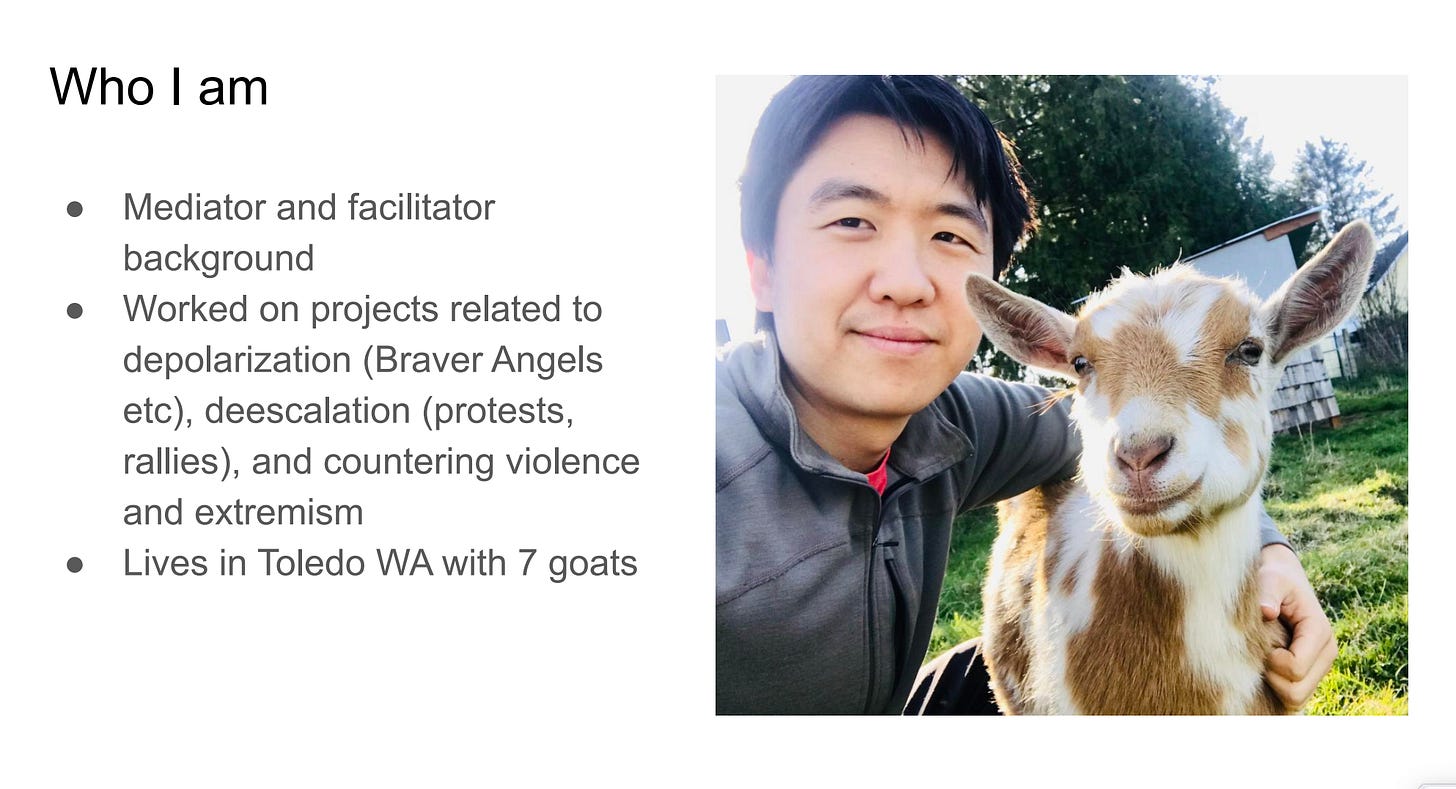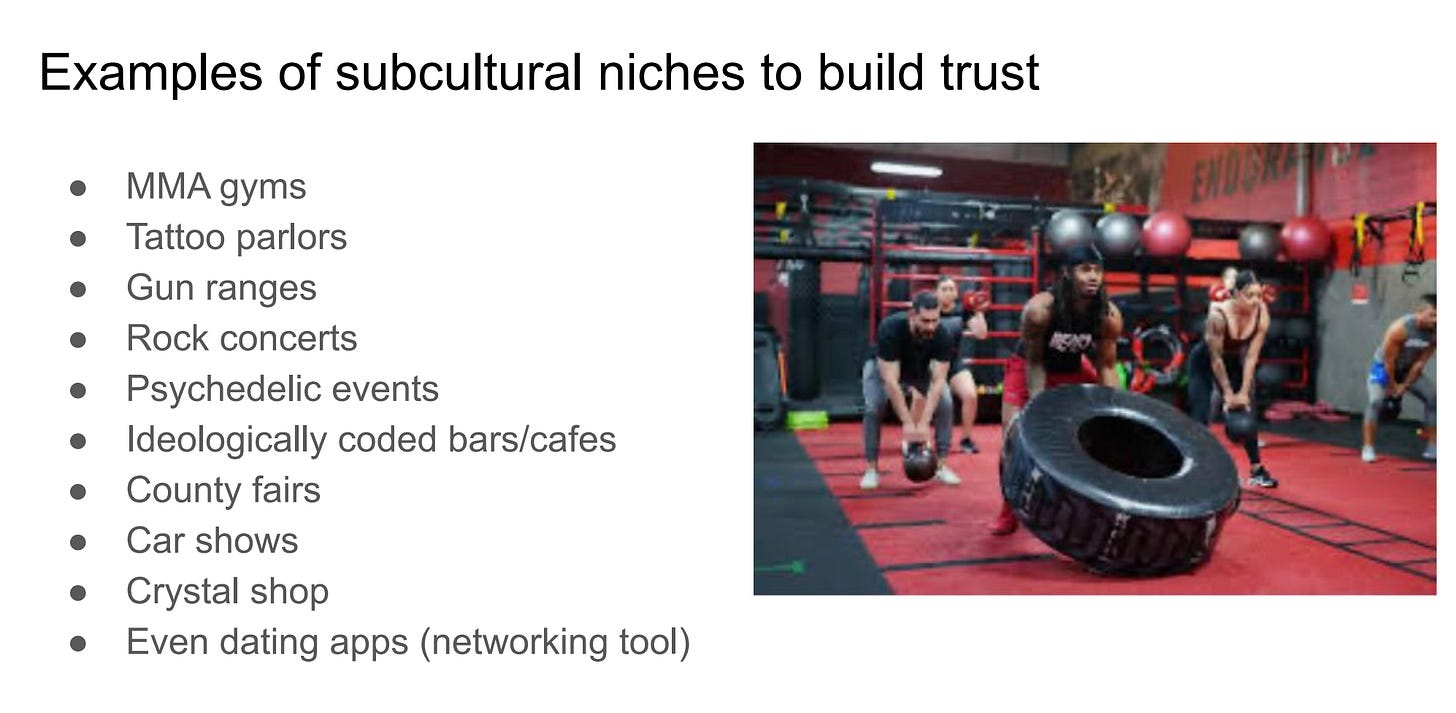Beyond the Bridge-Building Bubble: Strategies for Reaching the Unreachable
Insights from the June 5 Practitioner Mobilization for Democracy Forum on political outreach, civic trust, and real-world depolarization
The Challenge of True Belonging in a Divided Democracy
Across the Thriving Together US community, one core belief animates our work: all people, in all places, matter—and all perspectives belong. As we build toward a thriving democracy rooted in belonging and civic muscle, we’ve continually returned to a fundamental question: how do we include those who don’t already feel included? How do we reach people who feel alienated by the language, frames, or formats of bridge-building work? And how do we cultivate authentic connection across ideological, cultural, and geographic divides—especially with communities that may view our efforts with skepticism or distrust?
As Bobby Milstein put it, “The draw to authoritarianism is often an unsatisfied thirst to belong... you just need to build the belonging without othering, which is based on human values and interdependence.”
The Practitioner Mobilization for Democracy (PMD) is one of the spaces wrestling with these questions in real time.
Insights from the June 5 PMD Forum on political outreach, civic trust, and real-world depolarization
On June 5, the Practitioner Mobilization for Democracy (PMD) hosted a special forum focused on a pressing challenge: how do we expand our reach beyond the familiar circles of the bridge-building and facilitation world? How do we connect with people who might never show up to a depolarization workshop—but whose voices are vital to the health of our democracy?
The Practitioner Mobilization for Democracy is a volunteer-driven, nonpartisan initiative that convenes facilitators, mediators, dialogue hosts, and community-builders to bring their skills into public life. Through regular forums and community-of-practice gatherings, PMD is cultivating a network of engagement practitioners who are ready to help repair our fractured civic culture and infuse our democratic systems with collaborative practices.
The June forum featured a training by mediator and facilitator Ryan Nakade, whose years of hands-on work in politically charged environments offered fresh perspective. Ryan's experiences with CURE-PNW—a regional de-escalation project stretching from Portland to Olympia—helped surface strategies that anyone can apply to expand the field of who we engage, and how.
What emerged was not just a set of tools, but a shift in posture. An invitation to reach across difference, on others’ terms and turf.
From the Streets to the Synagogue to the Subculture
Ryan's work with CURE-PNW focused on preventing political violence and building long-term resilience to extremism. The team recruited and trained what he called "credible messengers"—trusted community insiders from all walks of life: anarchists and pastors, Black Panthers and gunsmiths, journalists and militia members.
They didn’t find these people through email lists or public invitations. They found them by showing up: at school board blowups, street protests, political rallies, bars, tattoo parlors, even dating apps. “Conflict hunting,” Ryan called it—intentionally entering high-conflict spaces to listen, build rapport, and plant seeds.
"I realized the people who most need bridge-building will never walk into a room labeled as such. So we had to meet them where they are."
Techniques with Edge and Empathy
Throughout the presentation, several practical outreach approaches emerged that practitioners can adopt:
Empathy Booths at farmers markets and bars—offering cookies, coffee, and conversation without an agenda.
"Political Peacocking"—wearing attention-grabbing apparel to spark unexpected dialogues.
Subcultural Embedding—building trust at gun ranges, MMA gyms, and church picnics, not panels or policy roundtables.
Training as Trojan Horse—delivering communication and de-escalation skills tailored to local culture and language.
These weren’t one-off workshops. They were community-specific engagements designed to shift norms, create new relationships, and ripple outward.
“Bridge-building doesn’t have to look like a circle of chairs and sticky notes. Sometimes it looks like a BBQ, a sermon, or a clean-up day.”
Navigating the Real Tensions: Inclusion Without Capitulation
Engaging across lines of difference isn't just about having good intentions. It's a live tension at the heart of any movement that hopes to be truly transpartisan.
One of the biggest challenges identified in the PMD Forum—and echoed in broader strategy discussions across Thriving Together and the pro-democracy field—is how to connect with people who are not already inclined to join bridging conversations. This includes many people on the political right, especially those disillusioned with mainstream institutions, but also people across the spectrum who feel alienated or skeptical of structured dialogue spaces.
This isn’t simply a matter of left reaching right. It’s a matter of building civic relationships across every form of siloed identity—geographic, ideological, cultural, generational. As Ryan modeled, the key lies in approaching others on their own terms, and with deep respect for their agency.
At the same time, this work raises principled questions: How do we ensure that inclusion doesn’t mean enabling harm? How do we differentiate between creating space for dissent and legitimizing anti-democratic ideas? These are not abstract dilemmas. They show up in every decision about language, partnerships, invitations, and events.
Conversation Starters for Bridging Across Difference
These questions, shared by Ryan Nakade during the forum, are designed to open space rather than win arguments:
– “What brings you here today?”
– “What do you wish others understood about your view?”
– “How do you decide what sources to trust?”
– “What’s at stake for you in this?”
Download the full cheat sheet (PDF)
Walter Roberts named the dilemma clearly: “When is bridging cover for that which is... bad actor stuff, and when is bridging exactly what we need to thrive together?”
Many in the PMD space are experimenting with a "both/and" orientation. We can build wide bridges of interdependence while still blocking harmful forces. We can name our values clearly—including opposition to authoritarianism—while staying open to conversation. And we can recognize that not all roles are the same: some people will focus on bridging, others on building alternative civic infrastructure, others on naming and resisting extremism. The task is to coordinate across those approaches with integrity.
Reimagining Inclusion: Who’s Not in the Room?
The PMD Forum's breakout discussions extended the challenge: Who's missing from our efforts? Where do they gather? And how can we show up on their turf—without leading with bridge-builder jargon?
Participants named groups like rural conservatives, disaffected independents, movement skeptics, and ideologically coded communities who are wary of any initiative that feels performative or partisan. They explored practical ways to connect: go where trust already exists, partner with libraries or Rotary clubs, create third spaces not tied to red or blue. David Eisner put it succinctly: “It starts with showing up in evangelical spaces—it doesn’t start with inviting evangelicals to come to our spaces.”
The message was clear: inclusion isn’t about inviting people to our table. It’s about entering theirs.
A Civic Invitation
For the Thriving Together and OmniWin communities, this work is more than a case study. It’s a mirror. If we want a democracy that includes all people in all places, we have to be willing to meet them where they are—not just where we feel safe.
It means showing up without assumptions. Listening without needing agreement. And experimenting with forms of dialogue that may never use the word "dialogue."
This isn’t just about reaching out—it’s about reweaving civic life. That means engaging in spaces that may feel unfamiliar or uncomfortable, and co-creating democratic culture from the ground up. As one forum participant reminded us:
"Every action has ripple effects. The question is: are we designing for positive ripples?"
Let’s take that seriously. Let’s go beyond the bubble.
Get Involved with Thriving Together US
Join the effort to build a transpartisan movement of movements for civic renewal and democratic flourishing.






